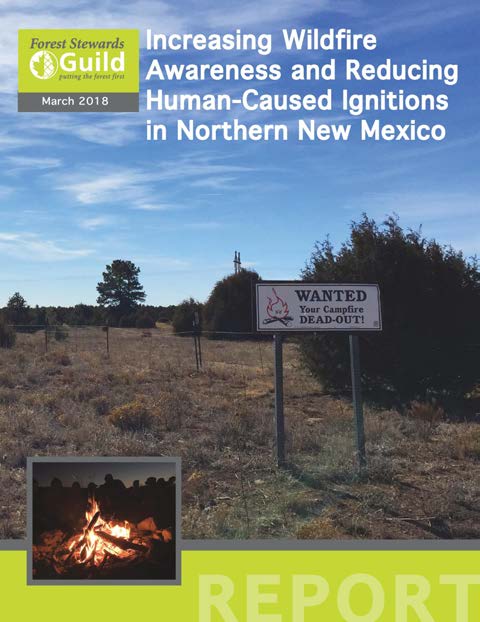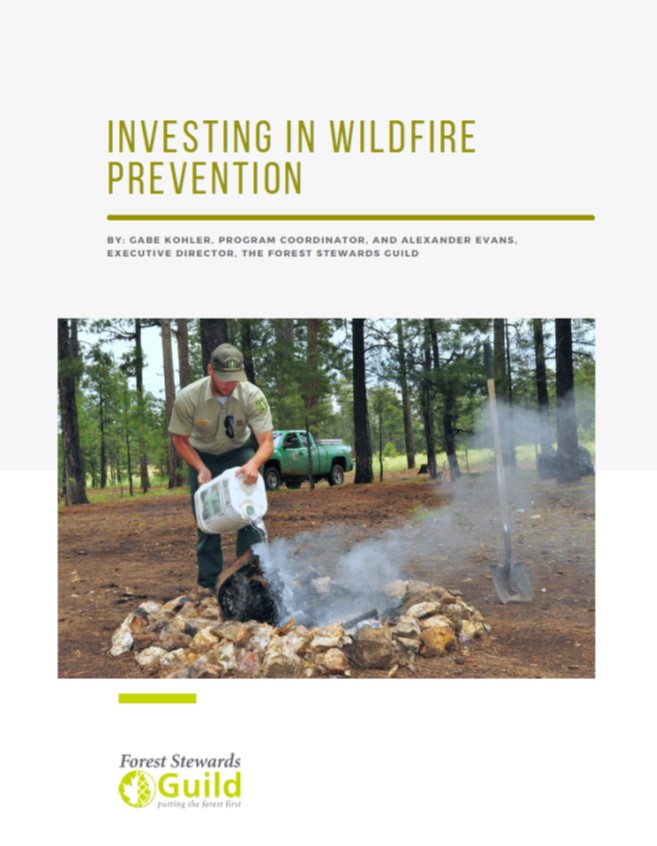Reducing the number of human-caused wildfires
 Written by Gabe Kohler and Zander Evans
Written by Gabe Kohler and Zander Evans
Fire is an essential natural process for many forests across the country. From longleaf pine forests in Florida to ponderosa pine forests in Washington, fire promotes health and resilience in many ecosystems. The Guild’s new policy statement on Fire, Forest Management, and Communities (currently under consideration by the professional members) emphasizes the importance of returning good fire to our forests through tools like prescribed burning.
At the same time, each summer we are reminded of the dangers posed by large, high-severity wildfires that claim lives, destroy structures and communities, disrupt ecosystems, and negatively impact economies. Many of these uncharacteristic wildfires are started by people accidentally. Even after over 75 years of Smokey Bear telling people to put out our campfires, humans are still causing over 90% of wildfires. In fact, 97% of fires that threaten homes in the wildland-urban interface are human caused (Mietkiewicz et al. 2020 https://doi.org/10.3390/fire3030050).
The Guild has been working for five years with partners including the US Forest Service, Northern Arizona University, and the Forest Trust to better understand how we can reduce human-caused wildfires. In 2018, we released a report, Increasing Wildfire Awareness and Reducing Human-Caused Ignitions, which highlights three key elements of the problem using Northern New Mexico as a focal area:
- Preventable human ignitions cause a disproportionate number of dangerous wildfires.
- Investments in wildfire prevention programs are much smaller than they should be given their importance and effectiveness.
- Public education campaigns to prevent wildfires are not well studied and there are likely significant opportunities for improvement.
 In 2021, a new Guild report, Investing in Wildfire Prevention, delved deeper into how federal prevention budgets are invested. The report recommends greater information sharing and transparency about the challenges that wildfire prevention programs face. Creating and sharing actionable prevention plans based on priority areas, as some National Forests are already doing, is a sensible starting point for advancing wildfire prevention. The report identifies other opportunities to increase prevention effectiveness, including: education of urban forest-users about forest restrictions and closures, outreach to non-forest-users during fire season, and transferring knowledge from one fire prevention technician to another by overlapping personnel and tracking district-level accomplishments. Later this year, the Guild will start a new, larger research effort under the leadership of Dr. Catrin Edgeley at Northern Arizona University that will answer some of the questions raised by our past reports.
In 2021, a new Guild report, Investing in Wildfire Prevention, delved deeper into how federal prevention budgets are invested. The report recommends greater information sharing and transparency about the challenges that wildfire prevention programs face. Creating and sharing actionable prevention plans based on priority areas, as some National Forests are already doing, is a sensible starting point for advancing wildfire prevention. The report identifies other opportunities to increase prevention effectiveness, including: education of urban forest-users about forest restrictions and closures, outreach to non-forest-users during fire season, and transferring knowledge from one fire prevention technician to another by overlapping personnel and tracking district-level accomplishments. Later this year, the Guild will start a new, larger research effort under the leadership of Dr. Catrin Edgeley at Northern Arizona University that will answer some of the questions raised by our past reports.
The Guild’s work on reducing human-caused wildfires dovetails well with our efforts to foster Fire Adapted Communities and promote prescribed fire. Reducing the number of wildfires that put communities at risk makes the job of building resilience to wildfires easier. Returning good fire to the forest is easier when resources and attention are not pulled away to focus on dangerous, accidental ignitions. Reducing human-caused wildfires is part of the solution to safer communities and healthy forest ecosystems.
